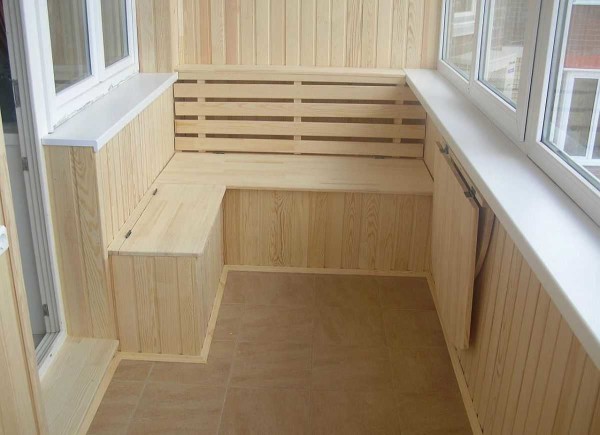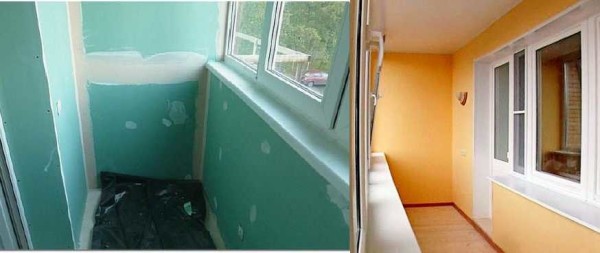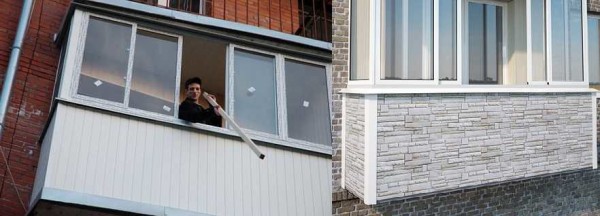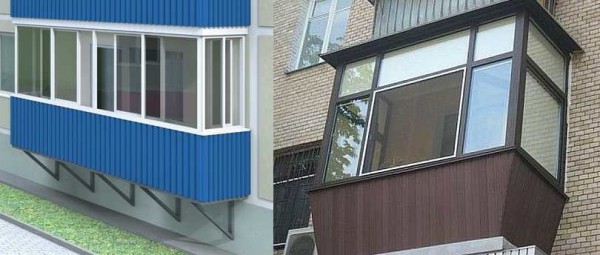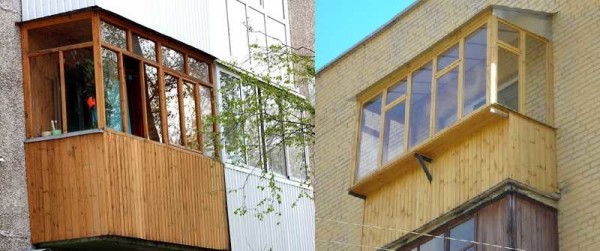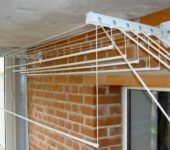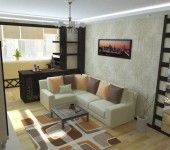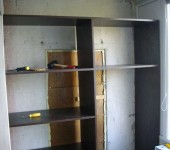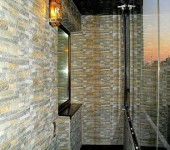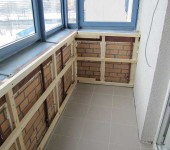The better to sheathe the balcony
Repair and insulation of the balcony will inevitably raise a lot of questions, and first of all it is necessary to figure out how to sheathe the balcony inside and outside. The requirements for the materials are different, therefore we will consider them separately.
The content of the article
How to sheathe the balcony inside
There are a lot of options, both traditional and new. The requirements for interior decoration of the balcony are mainly as follows:
- durability - after renovation, you want at least 10 years not to worry about how the balcony looks like;
- practicality: the surface should be washed well, not absorb dirt;
- attractiveness - it is quite possible to make a place for rest from the balcony, and not a warehouse of unnecessary things;
- ease of installation - this is especially important if you are going to do the cladding with your own hands;
- maintainability - you never know how to develop, it should be possible to replace the damaged area.
There are many requirements, but often one more is added to them - financial. Not everyone has the ability or desire to invest a decent amount. From the point of view of all these requirements, we will analyze the most popular finishing materials.
Wood
In many regions, balconies are most often sheathed with wood products. The most popular lining and euro lining, but you can use any other similar materials: imitation of timber, block house, terrace or even ordinary planed board. The difference in appearance and, in some cases, in the method of fastening: the lining and its varieties (imitation of timber and block house) have a lock - a thorn-groove, due to which a connection is obtained without gaps.
Next, let's look at everything point by point:
- Durability. With proper care, such a finish will last for decades. Only periodically (once every 3-5 years) it will be necessary to restore or renew the protective coating. Without it, the wood loses its attractiveness, and may even collapse.
- Practicality. Depends on the type of coverage. If there is a dirt-protecting film (polymer or varnish) on the surface, maintenance is simple. If the pores of the wood remain open, maintenance is problematic and dirt is difficult to remove.
- Attractiveness. Few materials can compete with wood in this area.
- Ease of installation. Not to say that the work is difficult, but time-consuming. First, a frame is assembled - a crate, then each plank is nailed to it.
- Maintainability. If necessary, starting from one of the corners, you can disassemble everything, and then assemble it. So everything is all right here too.
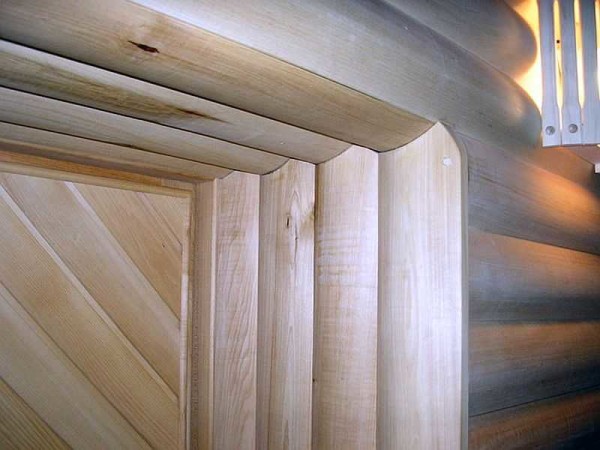
This is a cladding from a type of lining - a block house. She imitates a wall of logs
Sheathe the balcony with eurolining or ordinary clapboard - one of the most popular finishing options. Especially in regions where lumber is inexpensive. Where wood is a luxury, other materials are used.
Plastic
There is a wide range of plastic PVC panels in any store. Usually they are strips of material of different widths, which are joined like a lining: a lock with a spike and a groove. Therefore, such products are also called plastic clapboard. Usually this means a surface with seams (as in the photo below).
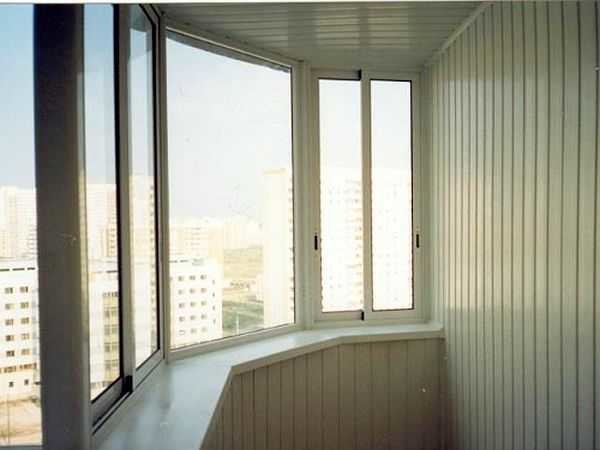
In the photo, a balcony sheathed with plastic - plastic clapboard
When they talk about plastic panels, they mean their seamless option. There is even more choice. There are surfaces glossy (shiny) and matte, monochromatic and with a wide variety of patterns.
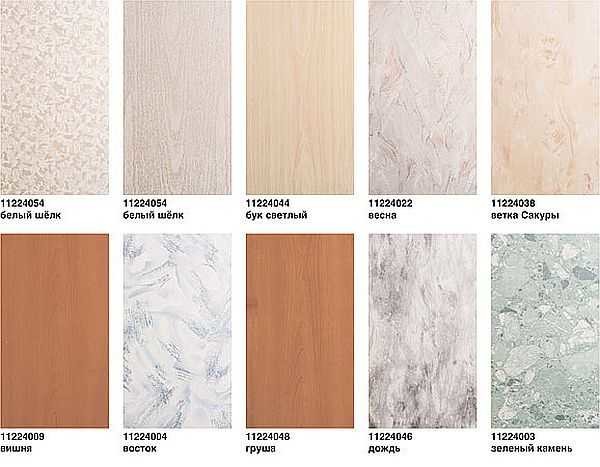
A very small part of the range of PVC panels. Just for cladding a balcony, these colors are used more often.
Now let's consider the compliance of this material with the requirements for interior cladding for a balcony:
- Durability. The declared service life of plastic panels is tens of years. Depends on the quality (and price), but for 8-10 years on the balcony it will survive without problems.
- Practicality. Cleaning such surfaces is very simple: a cloth or brush, soapy water.
- Attractiveness. A matter of taste, of course, but there are a lot of options, so you can arrange a balcony in any style and color scheme.
- Ease of installation. Installation is exactly the same as when working with clapboard: the frame is assembled, panels are attached to it. They are easy to cut: with a jigsaw or a hacksaw for metal (less burr is obtained).

It looks like a balcony sheathed with seamless PVC panels
- Maintainability. The same is the case as with the clapboard: you can disassemble it starting from one of the corners, replace the damaged panel, then assemble everything. Just one thing: collections change frequently, and if you do not have a "repair kit", it may happen that you cannot find the desired color or the color will differ. Therefore, leave some margin. Plastic is fragile and can break. This, by the way, is its main drawback, although manufacturers are trying to increase its strength by using partitions. But, if you hit well, it is not difficult to break or push through.
Sheathe the balcony with plastic panels - an option from the category of "inexpensive and good". This is the best choice when you need a practical surface.
Laminated materials: MDF panels and chipboard
Another option for interior decoration of the insulated balcony: sheathing MDF panels or laminated chipboard... They are based on wood fibers, treated in a special way and covered with a decorative film that imitates various surfaces. In addition to a flat surface, they also absorb sound well. This is an effect that is not available to plastic.
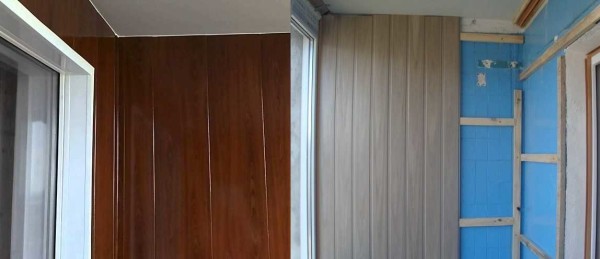
Do not know how to sheathe the balcony from the inside so that it looks good, the installation was simple and everything was inexpensive? MDF panels meet these requirements
This material has one feature: it does not like high humidity. Therefore, MDF wall panels are suitable only for heated balconies, and they will feel best on loggias. The same applies to laminated chipboard.
Now about whether they meet the requirements for finishing materials for a balcony or not:
- Durability. Subject to the requirements for operation (at normal humidity), the service life is 20-30 years.
- Practicality. The surface is even and smooth, all traces of dirt can be removed easily. The film used is dense and strong, but if you set the goal, it can be damaged by a sharp object.
- Attractiveness. Various surfaces, mostly imitating wood - this is the range of MDF lining (as it is also called). If you like the surface of the wood, but do not want to care for it, this is your option, because there is a very successful imitation.
- Ease of installation. The system is still the same: the lathing to which the trim is attached.
- The maintainability of MDF panels is similar to the case described above: some margin is required. It is more difficult with chipboard - either cut and replace part of the sheathing or change the entire fragment.
For the price, this is a completely democratic option. It takes a little time for installation: the width of the panel is about 20 cm, chipboard is generally sheets. So if you do not know how to sheathe a balcony inexpensively and quickly, you can take a closer look at MDF wall panels or laminated chipboard.
Drywall
This type of decoration has become traditional in recent years. Its advantages are known: you can get a perfectly flat surface of any configuration. But, with such a finish, "wet" processes with plaster are used, and if the surface is painted, without experience you are unlikely to get a sufficiently flat surface. Unless you use decorative plaster as a finish, which will hide small flaws.
Let's figure out the requirements for finishing:
- Durability. The surface itself can last for decades, but the color will have to be updated regularly. But this has its own plus: you can inexpensively change the annoying design. This is not possible with all other previously described materials.
- Practicality. If the paint is of good quality, it can be wiped down several times with a damp cloth. Only special plasters can be washed.
- Attractiveness. Plasterboard finishing - at the current stage, this is practically the standard of mid-level renovation. You can create a very interesting design or a completely neutral surface. It all depends on the desire.
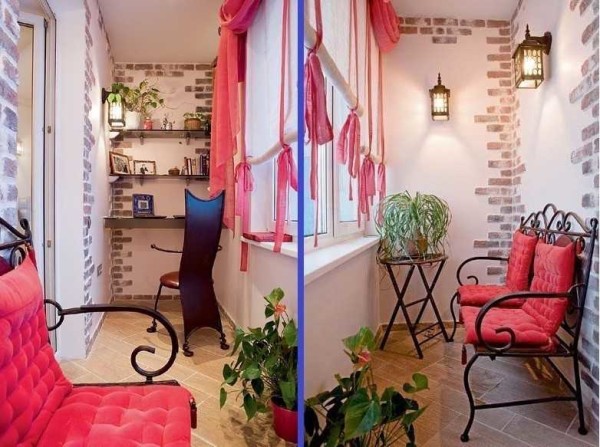
This is a photo of a plasterboard-covered balcony. Fragments added a certain amount of finishing stone
- Ease of installation. The technology is still the same: the frame on which the finish is mounted. Only in the case of gypsum plasterboard is a rather large area of plastering work added. This process is the most difficult of all described earlier.
- Maintainability. In principle, everything can be fixed, but there will be a lot of work. It is also very likely that everything will have to be repainted. In any case, one wall. But you can fix it.
As you can see, there are a lot of finishing materials. And these are not all possible options. There are also exotic possibilities: sheathed with bamboo, cork, braids or mats. But for these types of finishes, the surface will have to be leveled with plaster. With the advent of new materials, this process is not very popular: it is slow and messy, but sometimes you cannot do without them. On the leveled and plastered surface, the finishing elements are put on the glue. Everything is simple, only bamboo and cork are decent, but the design is beautiful and unconventional.
How to sheathe a balcony outside
The exterior decoration of the balcony makes slightly different requirements for the materials. In addition to everything else, it must be strong and reliable, wear-resistant. To understand the best way to sheathe a balcony outside, consider the main options.
Vinyl siding
It is available in two versions - the traditional one in the form of long boards with a tenon / groove fastening, which is often used for sheathing houses, and the facade one in the form of slabs with uneven edges, imitating stone or masonry. Both materials are mounted on the lathing with self-tapping screws, but the frame is assembled slightly differently, adjusting to the geometry of each material.
Metal siding or profiled sheet
Although vinyl is considered durable among plastics, it will not argue with metal. If for high-lying balconies how strong the material is is not critical, then for lower floors it is very important. Therefore, at the bottom, the balconies are often sheathed outside with metal siding or profiled sheet.
The better to sheathe the balcony with siding or professional sheet is a matter of personal preference. Both have a high degree of reliability. Siding is made of aluminum or galvanized iron, on the front surface of which a polymer film is applied. Profiled sheet - a shaped sheet of roofing iron covered with polymer or paint. The service life is declared from 15 to 25 years.
The main difference is in the installation method. A part of the desired shape is cut from the profiled sheet and attached to the crate in a large piece with special self-tapping screws with a painted cap. Siding is also assembled as a lining: there is a spike on one side, and a groove on the other. Along the edge of the strip there is a perforation for fasteners. Self-tapping screws are screwed into it (in the middle of the hole, slightly short of the cap - leaving the ability to move when the temperature changes in materials).
How to decorate a house with siding is described in the article “How to sheathe a house with siding with your own hands". If you have chosen this material, you will need to know the features and installation rules ...
Wood cladding
Houses are built from wood, so why not sheathe the outside balcony with it? Not a bad option, but wood needs maintenance. Therefore, special attention should be paid to the impregnation of the material used. Take antiseptic and protective compounds for outdoor use. Processing is carried out before the start of installation - then it will be problematic. When finishing, do not forget to process the ends of the boards sawn to size. Otherwise, the entire installation is the same.
Just keep in mind that without proper care, pretty skin will turn into something unattractive. A fragment of a tree left without leaving can be seen in the photo at the bottom right.
How to sheathe a balcony without glazing
Since the finish of an unglazed balcony will be exposed to all atmospheric phenomena, it is necessary to choose from materials for the exterior of the house. Possible options:
- siding - vinyl, basement, metal;
- decorative finishing stone;
- porcelain stoneware;
- plaster for outdoor use;
- wood;
- ceramic frost-resistant tiles;
- polycarbonate.
Most of the materials are familiar to you. There may be questions only about polycarbonate. Sheathe the balcony with polycarbonate steel recently. And you can make not only a visor on the upper floors (pictured on the left). This material looks very nice paired with a forged balcony fence. But on such a balcony, the order should be perfect.
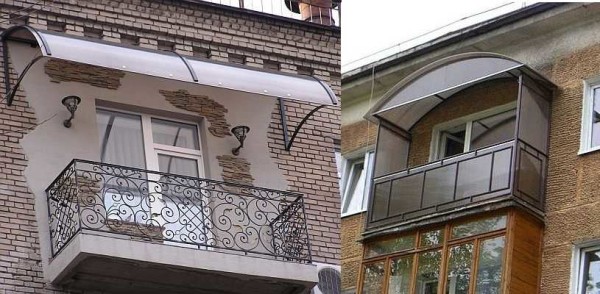
Polycarbonate in balcony decoration
How to sheathe the ceiling
On a glazed balcony, the ceiling is often sheathed either with the same material as the walls, or with plastic panels. You can make a plasterboard ceiling.
If we are talking about an unglazed balcony or loggia, then the ceiling is usually sheathed with siding. It is inexpensive, easy to clean, easy to install, and at the same time, holds well.
See the photo below for some ideas for finishing unglazed balconies.
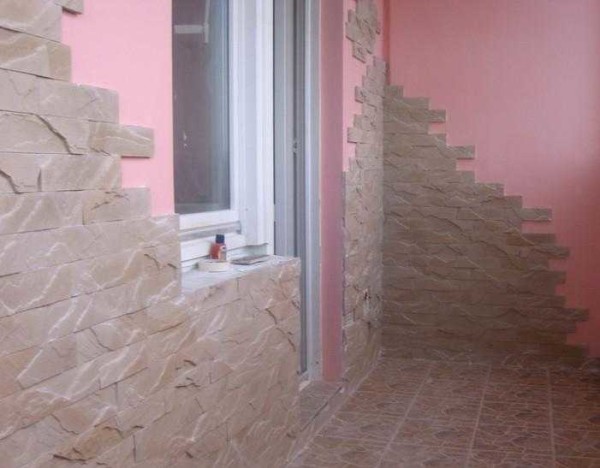
How to sheathe without glazing: a combination of a plastered painted surface and decorative stone
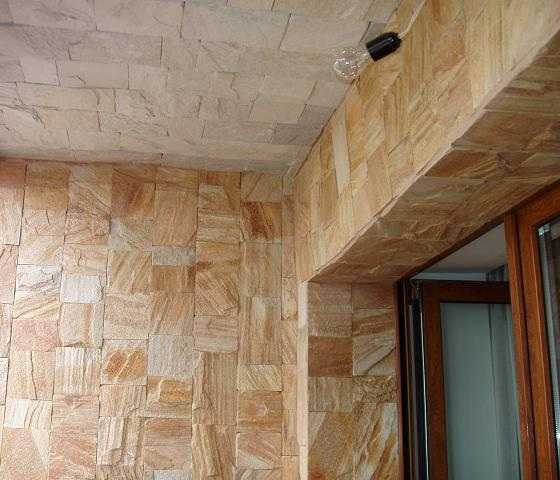
Wall and ceiling design options
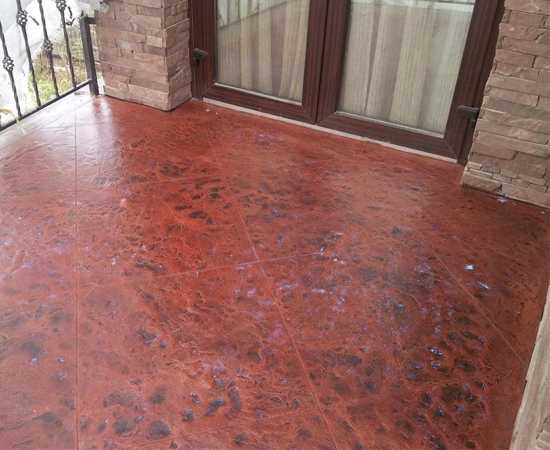
Porcelain stoneware on the floor

